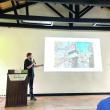Saving the World Without Fanfare
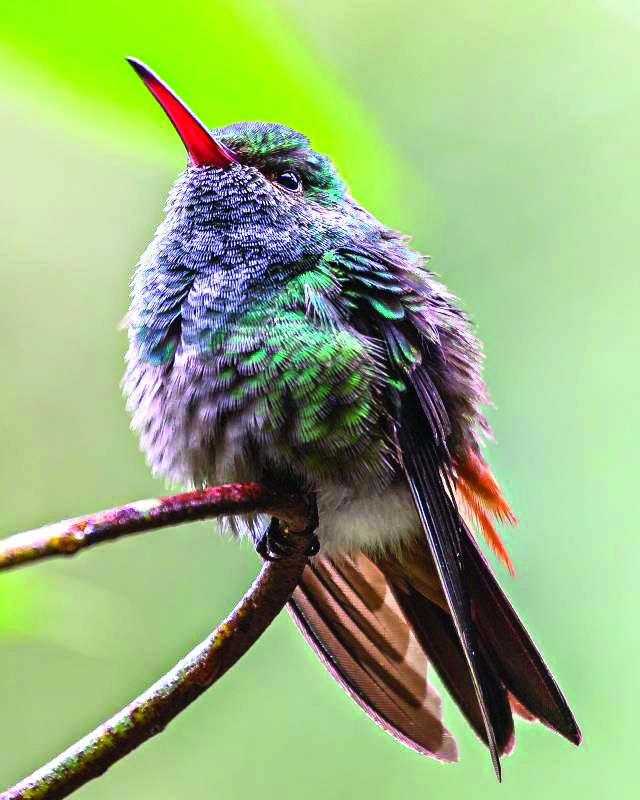 Rufous-Tailed Hummingbird, one of the common species found in backyards and natural areas in Cali, Colombia. Photo by Mark Morflew via Wikipedia Commons
Rufous-Tailed Hummingbird, one of the common species found in backyards and natural areas in Cali, Colombia. Photo by Mark Morflew via Wikipedia Commons
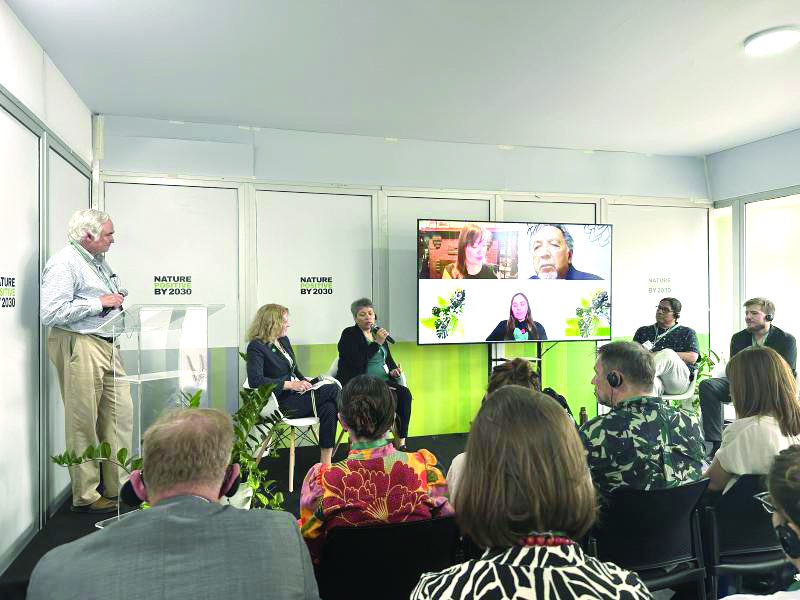 The delegation from the Seal River Watershed from Manitoba, Canada, speaking at an official Blue Zone event at COP16 in Cali, Colombia. One of the authors, Jeff Wells, introduced the panel. Photo courtesy of Kohl Barrault
The delegation from the Seal River Watershed from Manitoba, Canada, speaking at an official Blue Zone event at COP16 in Cali, Colombia. One of the authors, Jeff Wells, introduced the panel. Photo courtesy of Kohl Barrault
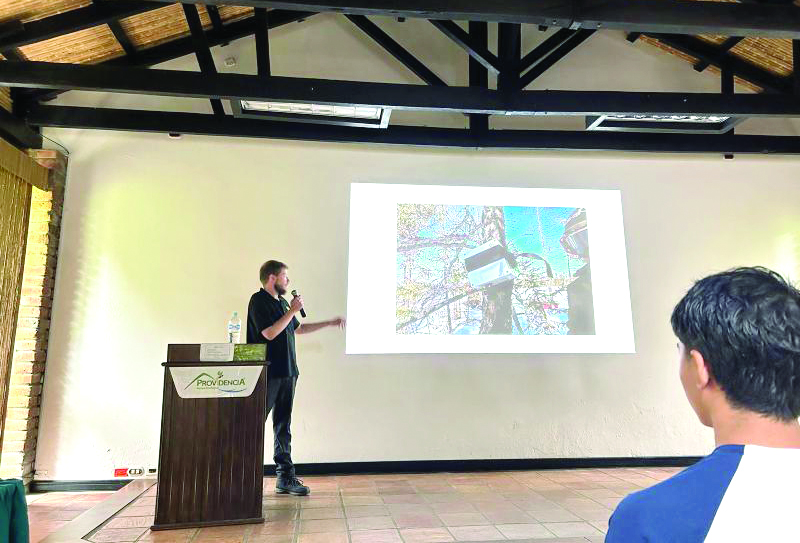 A member of the Seal River Watershed Alliance speaking at a Green Zone eco park event at COP16 in Cali, Colombia. Photo courtesy of Lane Nothman
A member of the Seal River Watershed Alliance speaking at a Green Zone eco park event at COP16 in Cali, Colombia. Photo courtesy of Lane Nothman
 Rufous-Tailed Hummingbird, one of the common species found in backyards and natural areas in Cali, Colombia. Photo by Mark Morflew via Wikipedia Commons
Rufous-Tailed Hummingbird, one of the common species found in backyards and natural areas in Cali, Colombia. Photo by Mark Morflew via Wikipedia Commons
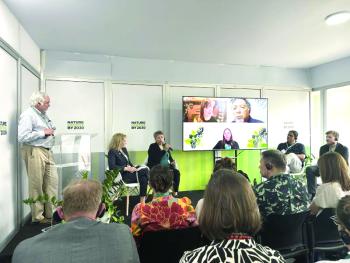 The delegation from the Seal River Watershed from Manitoba, Canada, speaking at an official Blue Zone event at COP16 in Cali, Colombia. One of the authors, Jeff Wells, introduced the panel. Photo courtesy of Kohl Barrault
The delegation from the Seal River Watershed from Manitoba, Canada, speaking at an official Blue Zone event at COP16 in Cali, Colombia. One of the authors, Jeff Wells, introduced the panel. Photo courtesy of Kohl Barrault
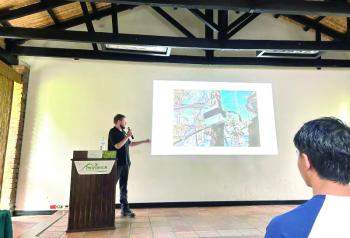 A member of the Seal River Watershed Alliance speaking at a Green Zone eco park event at COP16 in Cali, Colombia. Photo courtesy of Lane Nothman
A member of the Seal River Watershed Alliance speaking at a Green Zone eco park event at COP16 in Cali, Colombia. Photo courtesy of Lane Nothman
The city of Cali, nestled as it is in the green valley between two mountain chains in southern Colombia, is incredibly busy this week. That’s because Cali is the host of a meeting of most of the world’s nations to collectively make decisions on how to deal with a problem that literally impacts every single one of us. That issue is the nose-dive in the abundance and diversity of life on planet earth—what is often referred to as the steep decline in global biodiversity.
Colombia is a fitting place to discuss biodiversity since it has the most bird species of any country. It also has the second most plants, butterflies, freshwater fishes, and amphibians.
The event is the 16th meeting of the signatories of the global biodiversity treaty otherwise known as COP16 (the 16th meeting of the Conference of the Parties to the treaty). The meeting halls, pavilions, receptions, hotels, and restaurants are filled with the top officials of environmental agencies of the world’s nations; heads of Indigenous, state, provincial, and city governments; the CEOs of conservation non-profits including some of the world’s largest; well-known scientists, and even some artists and other celebrities who support conservation.
And yet there is one delegation of participants in COP16 who are among the most important to the future of the planet but are little known to most of the rest of the thousands of COP16 attendees. These seven Indigenous leaders, youth, and elders are part of a group called the Seal River Watershed Alliance. They are from four First Nations that together are moving forward a plan to protect the 12-million-acre Seal River Watershed of northern Manitoba. That’s a region almost half the size of the entire state of Maine. Put another way, it’s the size of the entire country of Costa Rice!
As we've written about previously, the Seal River Watershed is is a place that supports literally tens of millions of birds. Some of them are just arriving around Cali this week like lesser yellowlegs, osprey, and yellow warblers. Add on to that the polar bears, belugas, caribou, seals, moose, fish, wolves, wolverines, butterflies, beetles, plants, fungi, and other forms of biodiversity. Now add in the billions of tons of carbon stored in the forests, peatlands, and areas under permafrost, and its thousands of lakes and ponds. Factor in that the entire watershed is undammed and free flowing into Hudson Bay. Incredible!
How many other places of this size and this impact do you know of anywhere on Earth that are actively being moved toward protection?
The seven-member Indigenous delegation from the Seal River Watershed Alliance at COP16 in Cali this week are making among the greatest contributions of human society to solving our biodiversity crisis. They are speaking in the meetings of the formal UN negotiation area called the Blue Zone. They are participating in events across the less formal, open-to-the public portion of COP16 called the Green Zone where they are visiting Colombian ministries and museums, speaking at schools and libraries, visiting eco-parks. Everywhere, they are spreading the word about their work and building global recognition and support for the conservation of the Seal River Watershed.
In years to come, we wonder if some of the people that get to meet them will look back and remember how lucky they were to know some of these heroes for the world. We hope so.
Jeffrey V. Wells, Ph.D., is a Fellow of the Cornell Lab of Ornithology and Vice President of Boreal Conservation for National Audubon. Dr. Wells is one of the nation's leading bird experts and conservation biologists. He is a coauthor of the seminal “Birds of Maine” book and author of the “Birder’s Conservation Handbook.” His grandfather, the late John Chase, was a columnist for the Boothbay Register for many years. Allison Childs Wells, formerly of the Cornell Lab of Ornithology, is a senior director at the Natural Resources Council of Maine, a nonprofit membership organization working statewide to protect the nature of Maine. Both are widely published natural history writers and are the authors of the popular books, “Maine’s Favorite Birds” (Tilbury House) and “Birds of Aruba, Bonaire, and Curaçao: A Site and Field Guide,” (Cornell University Press).






